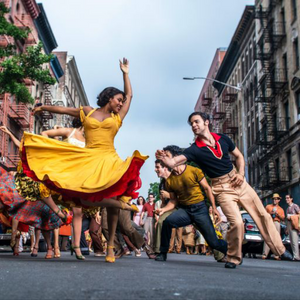We’re coming into “awards season” and the new version of West Side Story directed by Steven Spielberg will no doubt grab a few of those. For those unfamiliar with the plot, the musical tells the story of two rival gangs in the New York of the 1950s. On one side, there are the Sharks, a Puerto Rican gang; on the other, the Jets, a “White” gang. The two gangs fight over territory. In this twentieth-century re-telling of Romeo and Juliet, a Puerto Rican woman and a man from the Jets fall in love, and this leads to (more) violence among the gangs.
The idea of one group taking over the other’s territory in New York is something that was familiar to me from an early age. I remember asking why so many family members in New York lived in “Chinatown”. I learned that these used to be streets full of Puerto Rican residents, but the Chinese neighbourhoods expanded over time and took over the area. The fact that this process of population replacement would involve tensions between the old and new residents should not come as a surprise to anyone. West Side Story is a tale of those tensions for a particular place and time.
I had never previously watched West Side Story (neither the 1961 version nor stage adaptations). However, growing up in Puerto Rico, I was aware of the story and a particular interpretation of the plot that fitted broader societal biases. The story went something allowing the following lines; Puerto Ricans moving to New York are poor and once there they become criminals, and become involved in dangerous gangs.
This story also has implications for the Puerto Ricans from the island while visiting the United States. I was taught that it is important to make clear that we are different from the Puerto Ricans in NY. In fact, we should clarify that those are not real Puerto Ricans. They are “Nuyoricans”, a mixed species that does not really fit anywhere.
I was curious about the role of the Sharks in Spielberg’s version of the story. After all, the person who directed Jaws is likely to provide a very bloody version of sharks in general. To my surprise, Spielberg’s Sharks paint a very different picture from the traditional storyline about Nuyoricans. They are not portrayed as criminals. They are an oppressed migrant group that fights discrimination in order to protect their community. There is a bigger purpose to the group and its actions.
The Jets, on the other hand, are a portrait of an aggressive White gang with racist inclinations. There is also a social class identity to the Jets. Its members have nothing in terms of wealth, only their pride and territory gives meaning to their lives. In addition, while the Sharks put a strong emphasis on family as their central unit of support, the Jets have dysfunctional families.
The movie does more than providing a different social message. The quality of the production and singing is impressive, which I am sure builds on the previous versions of the musical. In one of the first scenes of the movie, the Sharks sing the Borinquena revolucionaria. This is a subversive version of Puerto Rico’s national anthem. While the “regular” national anthem talks about peaceful palm trees and beautiful beaches, this version talks about machetes, fighting and freedom. I have heard this song performed thousands of times by some great artists. None of those performances is as good as the one in the movie.
Overall, I am not sure which version of the Sharks reflects better the reality of the 1950s New York. However, this new version of the story has certainly confronted my childhood biases about the Nuyoricans and I suspect that would be the case for many people. It corresponds to a large volume of research explaining the power of movies and TV in general to affect public attitudes on migration, including attitudes towards diasporas.
* Header image is a still from West Side Story (2021) used under Creative Commons licencing
